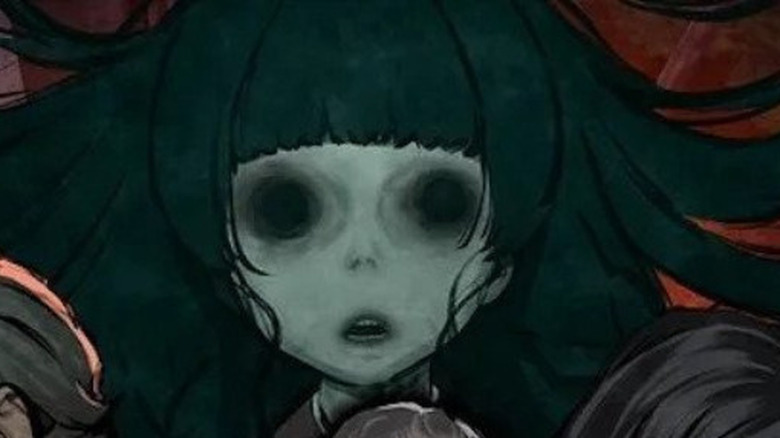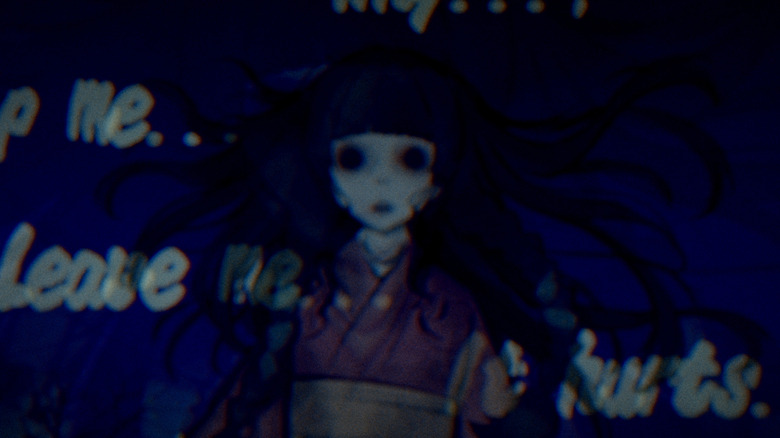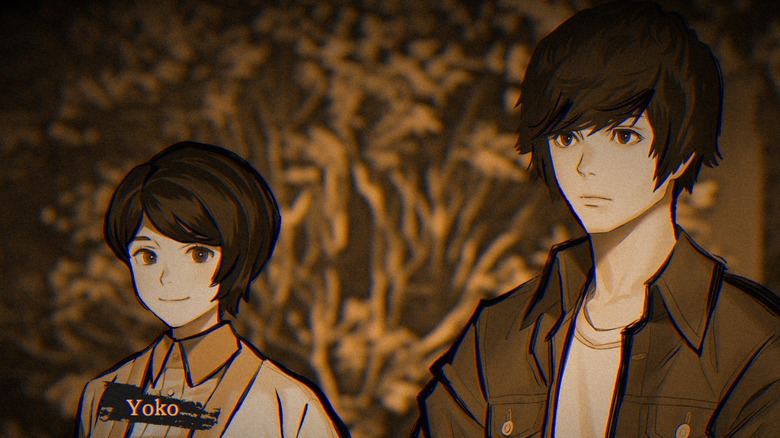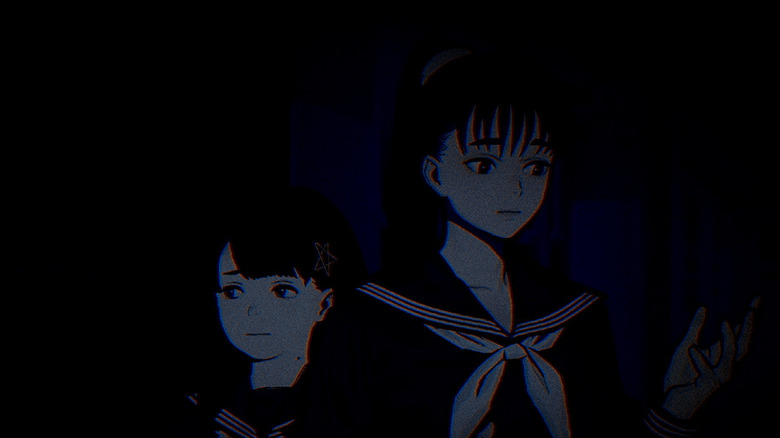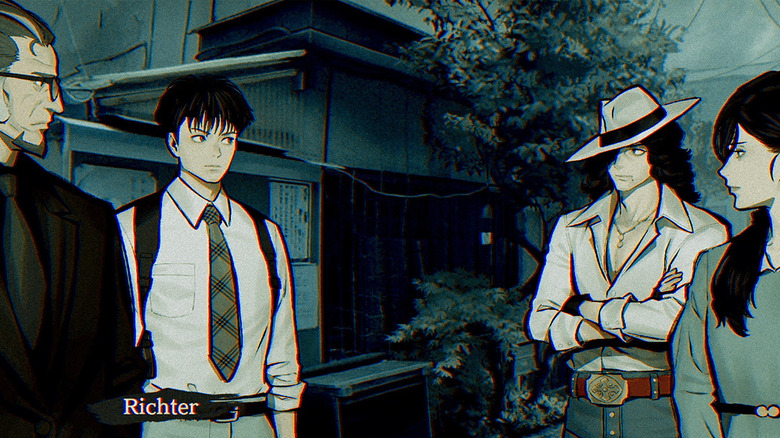Paranormasight: The Seven Mysteries Of Honjo Review - A Blessing, Not A Curse
- Incredible score
- Retro art style & lo-fi aesthetic is unique and fitting
- Visual novel that feels immersive
- Sensationally well-written characters
- Voice acting would’ve been nice
- Could’ve been scarier
A PC code was provided to SVG for this review. "Paranormasight: The Seven Mysteries of Honjo" is available now for PC, Nintendo Switch, and on the App Store and Google Play.
What's the best part of a mystery? Is it the initial hook that pulls you into the narrative? The way the clues come together and a twisted, nonlinear way? A well-written story, filled with suspenseful dialogue and red herrings that keep viewers on their toes? No matter what, if you love mysteries, then Square Enix has got the perfect game for you. "Paranormasight: The Seven Mysteries of Honjo" is a deliciously immersive and subversive mystery that asks players, "How far would you go to bring back someone from the dead?"
Let's Talk About Curse Stones...
"Paranormasight" opens with a greeting from a mysterious man known as "The Storyteller," who welcomes you to the game and provides you with a brief introduction to get started. The game takes place in the real-life neighborhood of Honjo (located in the Sumida district of Tokyo). A legend, known as "The Seven Mysteries of Honjo," has remained at the forefront of culture for its residents. Each mystery makes up the foundation of the "Rite of Resurrection," a powerful manuscript that allows someone to bring back someone from the dead. However, in order to power the ritual, potential wielders must bear a "curse stone," each holding a curse relating to the eponymous seven mysteries. With the curse stone, wielders can collect soul dregs that will help activate the ritual, either by killing innocent bystanders or by killing other curse bearers, which provide significantly more power.
Beyond the exposition, The Storyteller doesn't let on too much information about the actual story you're about to witness, but he makes it clear that you're about to enter this narrative as an omniscient and active observer.
Welcome to Honjo
Suddenly, you're dropped into the narrative, taking on the character Shogo Okiie, a young male office worker. He's agreed to meet his supernatural- and occult-obsessed friend Yoko in the middle of the night. However, as the night progresses, Shogo soon finds himself in a predicament with a dead body in his sight and a dreaded curse stone in his hands. Desperate to revive the dead body in front of him, he realizes his only option is to perform the "Rite of Resurrection." With no time to waste, he sets his sights on the eight other curse bearers within the city, knowing that killing them would provide significantly more soul dregs than an innocent. What follows is a long, exhausting, and disturbing night with no shortage of killings.
But then, "Paranormasight" does something amazing: it disrupts the narrative by introducing a story chart and three additional protagonists, all of whom were victims in Shogo's story. Players may have thought this was a linear story following Shogo as the main protagonist. However, the actual narrative is completely non-linear and full of exciting twists and turns. Branching pathways is nothing new in gaming. However, the way "Paranormasight" forces players to view characters as a victim in one character's plotline, and then as a protagonist (or hero) in another is subversive, intriguing, and genius.
An Immersive Visual Novel Experience
On its surface, "Paranormasight" may look like a traditional visual novel. And it's true. Most of the game relies on playing through short chapters, reading through dialogue flashing in text boxes onscreen while character sprites appear in the background, and the occasional dialogue options (some, more important than others). But, despite how passive the visual novel experience can sometimes be, what makes "Paranormasight" so special is how immersive it truly feels.
Like similarly structured and lauded games such as "AI: The Sominum Files" or the "Danganrompa" series, "Paranormasight" relies on viewers fully engaging with their environment in order to proceed through the mystery. Players will find themselves changing their viewpoint, zooming in on the scenery, and clicking (LOTS of clicking) on every possible item, person, and potential clue. Other times, you'll find yourself clicking on the "Think" or "Recall" buttons to give your character (and you) the chance to fully analyze all the information you've found and come to a conclusion about what it means. Even though you may not be able to walk around freely, the game still gives players the agency and freedom to move forward through the case using their own detective skills.
Additionally, the retro art style and lo-fi aesthetic are a perfect fit for the game, adding an extra layer of creepiness to an already spooky setting and plot. Some scenes are even animated, which is a refreshingly delightful surprise for a visual novel.
The only thing that would've made this immersive experience even better would've been the addition of voice acting. Similar to the abovementioned games, each of which includes fully voiced dialogue, "Paranormasight" has a colorful cast of characters, all of whom are written beautifully and realistically. It's a shame no voice actors were included to help them fully leap off of the page.
A Subtly Scary Masterpiece in Storytelling
For a game whose marketing is packed with scary ghost-like images, a creepily immersive score, and masterful sound design that truly makes players feel like they could be attacked at any moment, "Paranormasight" surprisingly is quite vanilla in terms of horror. The jump scares are few, and even when they do appear, it's often accompanied by suspenseful leadup music; so, by the time a scary figure does pop up, players have already been expecting it. It might still be scary for some, but the build-up has lessened it to a large degree.
The good news, however, is that it makes this truly incredible game accessible to those who might not be a fan of horror! The bad news, though, is that those who select "Paranormasight" specifically seeking a good scare will probably be disappointed in what little horror the game has to offer.
"Paranormasight: The Seven Mysteries of Honjo" is a special one. It's an active visual novel with a story that leaps off the page, allowing players the chance to play God, while still challenging the morality of right and wrong. With a beautiful score, hauntingly fitting retro visuals, sensational characters, and a truly creative mode of storytelling, be sure not to let a bit of blood and murder stop you from enjoying this Square Enix title.

